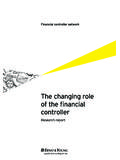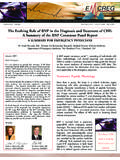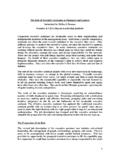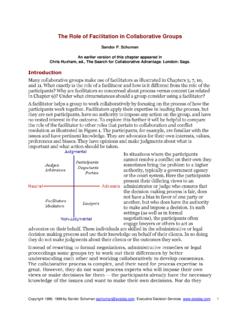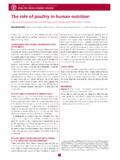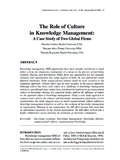Transcription of The critical role of the board in effective risk …
1 The critical role of the board in effective risk oversight A director s practical guide to asking the right questions at the right timeThe financial crises experienced over the past few years have left most organizations with a measure of economic caution not seen in a generation, new regulations with which to comply, and a heightened appreciation for good risk management. Directors are frustrated with the amount of time they must spend on regulatory and financial compliance matters time that would be better spent talking about the future of the business, progress made on realizing strategic business initiatives, and proactive risk mitigation activities.
2 The directors role is to balance performance and compliance by ensuring that management s actions are consistent with corporate strategy, reflective of the culture of the business, and in line with the organization s risk tolerance. They are expected to do their homework and be close enough to each other and the business to understand and analyze opportunities as well as risks in detail, while still maintaining enough distance to effectively challenge and assess how executives are managing performance and risk. Better-performing boards have found a balanced formula for overseeing and encouraging the management team, while constructively challenging management s decisions as critical role of the board in effective risk oversight At ernst & young , our research suggests that organizations with more mature risk management practices outperform their peers financially.
3 We believe that by applying a broad risk lens to the business, bringing to bear their experience and skills, and asking the right questions at the right time, directors can help companies realistically challenge assumptions, identify risks , understand their potential impact and manage effectively. We see and assist many boards and organizations that are striving to achieve better balance in their risk oversight activities, and we are witness to new leading practices as they emerge. In this document, we summarize and share these practices in order to help organizations reach that balance.
4 Our objective is not to give directors more to do, but rather to share ideas on how to be more strategic and efficient in handling their responsibilities with regard to risk. We want to help organizations move from implementing a risk strategy that simply protects the business to adopting one that enables the organization. Risk frameworks provide structure and information, but they don t replace the board s well-considered challenges to management s plans and activities. This report addresses the activities that directors typically have on their agenda, and highlights leading practices that can help deepen their understanding of strategic business risks and opportunities.
5 We suggest a structured risk focus as part of regular oversight activities, and provide key risk-related questions that can help directors be more effective decision makers throughout the business cycle. Asking the right questions will help management teams give directors what they need to optimize their contribution and fulfill their responsibilities, while allowing directors to spend less time on compliance issues and remain focused on business results and long-term success. Illustrative board calendarBoard activitiesQ1Q2Q3Q4 Approve the strategy and financial planApprove the budgetApprove material transactionsApprove the risk management programMonitor performanceSelect, evaluate and compensate the CEO and other senior executivesAt the end of this document we have provided a list of potential questions to help uncover critical risks relating to each of these critical role of the board in effective risk oversight Approve the strategy and financial planEvery high-performing organization s success is.
6 In large part, due to a sound corporate strategy, and highly disciplined planning and execution of that strategy. Strategic planning is an ongoing process rather than a single event. Given the constantly changing business environment, leading organizations need to step back at least once a year to refresh the plan as significant unforeseen events dictate and reaffirm the strategic direction. This process requires the board s knowledge and experience, plus a willingness to challenge the assumptions and variables behind the strategy discussions should focus on the approach for planning, the data required from management and outside resources regarding trends that have an impact on the business ( , where the information can be found, as well as its integrity and reliability), competitive positioning, opportunities, assumptions and risks .
7 When presented with the initial strategy recommendations, directors should ask questions and challenge assumptions while keeping risk top of mind. For example, is the strategy founded on a realistic assessment of the market share and growth prospects of the business? Are the proposed initiatives aligned to key drivers for competitive advantage? Do we have the right leaders to execute? Did we validate assumptions using independent market data? What if our market assumptions do not materialize? What would the exit strategy and impact look like?
8 Does our cost structure seem competitive? What dependencies do we have (vendors, distributors or other third parties)? Are we betting enough, or too much on key opportunities such as mergers or acquisitions given their associated risks ? How cyclical is our industry, and where are we in the cycle? Strategic opportunities come with risks that, if well-managed, can increase the value of the organization. However, these risks must be considered in light of stakeholders and the organization s risk capacity and tolerance, in addition to their potential impact on the competitiveness of the business and accompanying mitigation strategies.
9 Consider how the makeup of a public company s shareholder base can represent a potential risk to strategy-setting, especially if sizeable blocks of shareholders have conflicting interests and therefore, different levels of risk appetite ( , private equity versus long-term investors).An effective strategic plan is developed in light of its implication on cash flow and capital requirements; sufficient financing is critical . Analysis should include liquidity stress testing, reviews of capital availability and structure, review of quantum of debt repayment, and a thorough understanding of pensions and other post-retirement benefits obligations.
10 To ensure that funding is available when needed, particular attention should be paid to the potential timing of major cash requirements and to the necessary lead time to source that additional strategy discussions, directors should have absolute clarity on business goals for each initiative, the key risks that could prevent the organization from achieving results, as well as the key risks associated with not achieving results, uncertainties that need to be monitored and the execution timeline. From the time it s approved, the strategy should be viewed as a significant part of the foundation for risk and results oversight for management, internal audit and the questions Am I comfortable with the organization s vision, mission and strategy?










